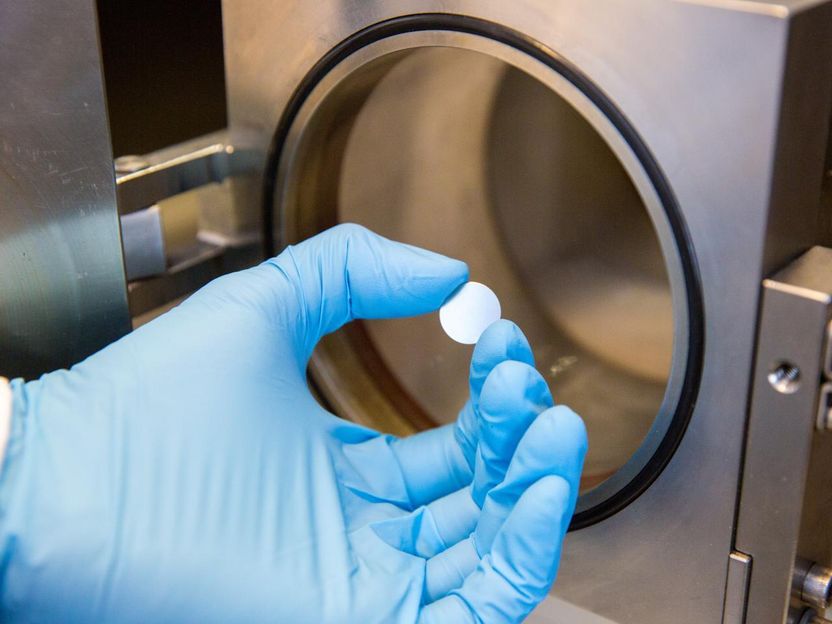Researchers developed manufacturing method for batteries with organic electrode materials
With people wanting to use smaller electronic devices, smaller energy storage systems are needed. Researchers of Aalto University in Finland have demonstrated the fabrication of electrochemically active organic lithium electrode thin films, which help make microbatteries more efficient than before. Researchers used a combined atomic/molecular layer deposition (ALD/MLD) technique, to prepare lithium terephthalate, a recently found anode material for a lithium-ion battery.

The sample makes a steel substrate look blue. Behind the hand is a ALD reactor.
Mikko Raskinen / Aalto University
When microbatteries are manufatured, the key challenge is to make them able to store large amounts of energy in a small space. One way to improve the energy density is to manufacure the batteries based on three-dimensional microstructured architectures. This may increase the effective surface inside a battery- even dozens of times. However, the production of materials fit for these has proven to be very difficult.
ALD is a great method for making battery materials fit for 3D microstructured architectures. Our method shows it is possible to even produce organic electrode materials by using ALD, which increases the opportunities to manufacture efficient microbatteries, says doctoral candidate Mikko Nisula from Aalto University.
The researchers' deposition process for Li-terephthalate is shown to comply well with the basic principles of ALD-type growth, including the sequential self-saturated surface reactions, which is a necessity when aiming at micro-lithium-ion devices with three-dimensional architectures. The as-deposited films are found to be crystalline across the deposition temperature range of 200−280 °C, which is a trait that is highly desired for an electrode material, but rather unusual for hybrid organic−inorganic thin films. An excellent rate capability is ascertained for the Li-terephthalate films, with no conductive additives required. The electrode performance can be further enhanced by depositing a thin protective LiPON solid-state electrolyte layer on top of Li-terephthalate. This yields highly stable structures with a capacity retention of over 97% after 200 charge/discharge cycles at 3.2 C.
Other news from the department science
Most read news
More news from our other portals
See the theme worlds for related content
Topic World Battery Technology
The topic world Battery Technology combines relevant knowledge in a unique way. Here you will find everything about suppliers and their products, webinars, white papers, catalogs and brochures.

Topic World Battery Technology
The topic world Battery Technology combines relevant knowledge in a unique way. Here you will find everything about suppliers and their products, webinars, white papers, catalogs and brochures.


























































